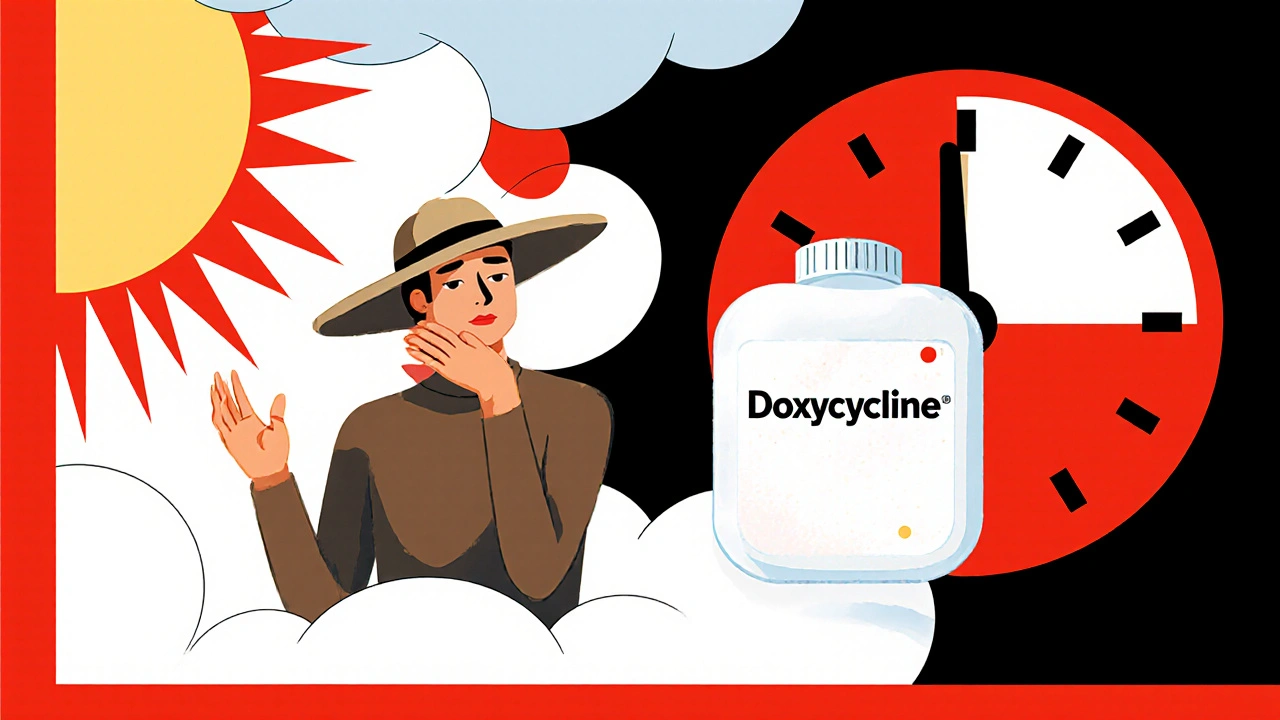
When you’re prescribed an antibiotic like doxycycline or ciprofloxacin, you’re probably focused on beating the infection. But there’s another hidden risk you might not know about: your skin can react badly to sunlight - not because you’re allergic, but because the drug itself turns into a light-sensitive trigger. This is called phototoxicity, and it can turn a normal day outside into a painful sunburn, blisters, or dark patches that last for months. The good news? You don’t have to avoid the sun completely. With the right steps, you can stay safe and keep taking your antibiotic without interruption.
What Exactly Is Phototoxicity?
Phototoxicity isn’t an allergy. It’s a chemical reaction. Certain antibiotics absorb UV light - mostly UVA, the kind that penetrates deep into your skin - and this energy triggers damage to skin cells. Think of it like the antibiotic acting as a sponge for sunlight, then releasing that energy as heat or free radicals that burn your skin from the inside out. Unlike a regular sunburn, this reaction can happen in minutes, not hours, and it often looks worse than a typical burn - red, swollen, sometimes blistering, and often in shapes that match where your skin was exposed. It’s not rare. Studies show up to 5.7 out of every 1,000 people taking doxycycline will have a phototoxic reaction. For ciprofloxacin, it’s about 2 in 1,000. And even if you’ve never had a problem before, it can happen at any time during treatment. The reaction doesn’t get better with repeated exposure - it gets worse.Which Antibiotics Are the Biggest Risks?
Not all antibiotics cause this. Some barely even register. Here’s the breakdown based on real-world data:- High risk: Doxycycline (especially doses over 100mg/day), tetracycline, minocycline (lower than doxycycline but still notable)
- Moderate risk: Ciprofloxacin, levofloxacin
- Low risk: Moxifloxacin, gatifloxacin (thanks to a chemical tweak at the C-8 position)
- Negligible risk: Sulfonamides (like Bactrim), most cephalosporins (like cefotaxime)
Step 1: Use SPF 50+ Sunscreen - and Apply It Right
SPF 30 isn’t enough. Studies show SPF 30 blocks only 55% of the UV rays that cause phototoxic reactions. SPF 50+ blocks 92%. That’s a massive difference. Here’s how to use it properly:- Apply 15-30 minutes before going outside
- Use at least a shot glass full for your whole body
- Reapply every hour if you’re outside, even if it’s cloudy or you’re in the shade
- Look for “broad spectrum” - it must protect against UVA, not just UVB
- Don’t rely on makeup or moisturizers with SPF - they’re rarely applied thickly enough
Step 2: Wear UPF 40+ Clothing - Not Just Any Shirt
A white cotton T-shirt? It only blocks 60-80% of UV rays. That’s UPF 5-10. You’re still getting burned. Instead, look for clothing labeled UPF 40 or higher. UPF 50+ blocks 98% of UV radiation. These aren’t special “sun protection” outfits - they’re just tightly woven fabrics. Many athletic brands now make them. Look for long-sleeve shirts, pants, and wide-brimmed hats. A baseball cap leaves your neck, ears, and under-chin exposed. A wide-brimmed hat (at least 3 inches) blocks 95% of UV from your face, according to UV badge tests. And don’t forget sunglasses - UVA can damage your eyes too.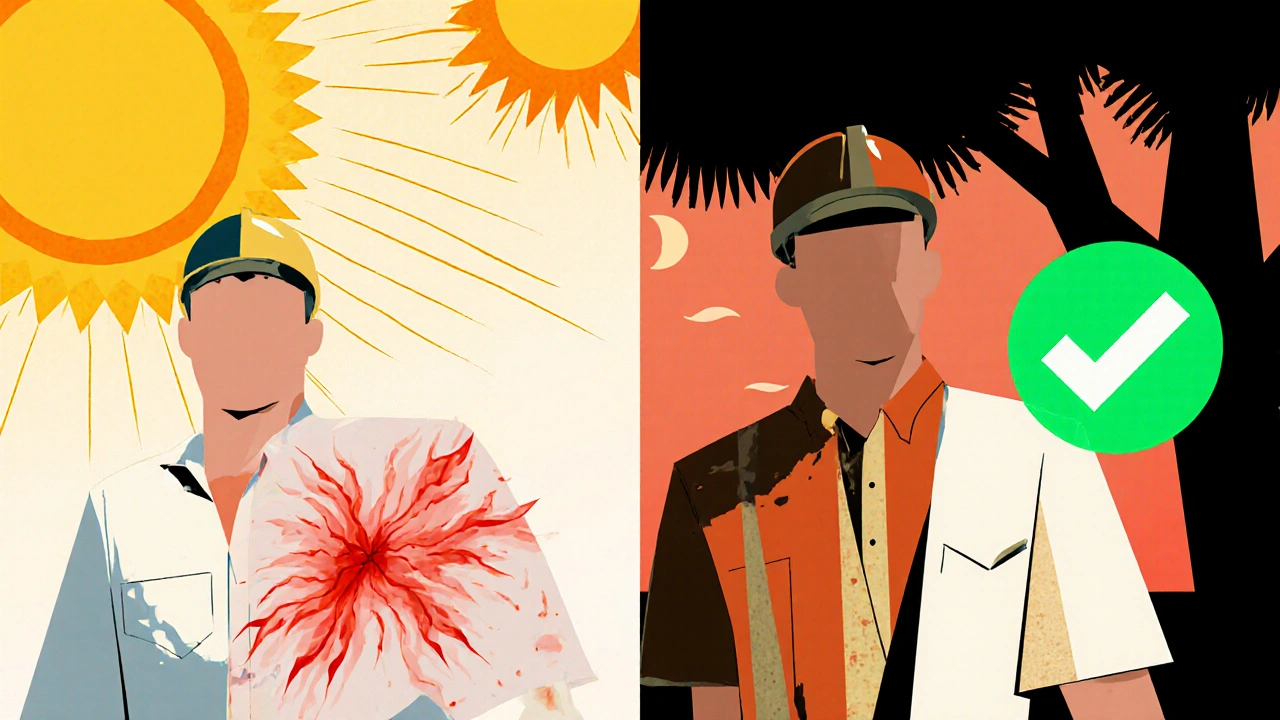
Step 3: Take Your Antibiotic in the Evening
This one’s simple, and it works. Taking your antibiotic 2-3 hours before bedtime reduces your blood levels during peak sun hours (10 a.m. to 4 p.m.). A 2017 study with 142 patients showed this strategy cut phototoxic reactions by 37% for fluoroquinolones. For doxycycline, it’s not as well studied - but since it’s active for 12-24 hours, taking it at night still lowers daytime concentration. If your doctor prescribed it for morning use, ask if switching to bedtime is safe. Most of the time, it is.Step 4: Avoid Direct Sunlight Altogether - Especially in Peak Hours
Even with sunscreen and clothing, your skin is still under stress. The safest move? Avoid the sun when it’s strongest. Plan outdoor activities for early morning or late afternoon. Skip the beach, pool, or hiking between 10 a.m. and 4 p.m. If you work outside, talk to your doctor. A 2021 survey found nearly 30% of dermatologists changed antibiotics for patients with outdoor jobs. If you’re a construction worker, gardener, or delivery driver, this isn’t just a suggestion - it’s a medical necessity.Step 5: Use Apps to Stay on Track
People forget. A University of Michigan survey found 68% of patients didn’t know when to reapply sunscreen. That’s why tools help. Apps like UV Lens (used by over 12 million people) give real-time UV index alerts and can remind you to reapply sunscreen based on your medication. A 2023 trial showed these apps improved adherence by 52%. Set a daily alarm: “Reapply sunscreen. Take antibiotic.” It takes two minutes, but it could save you weeks of pain.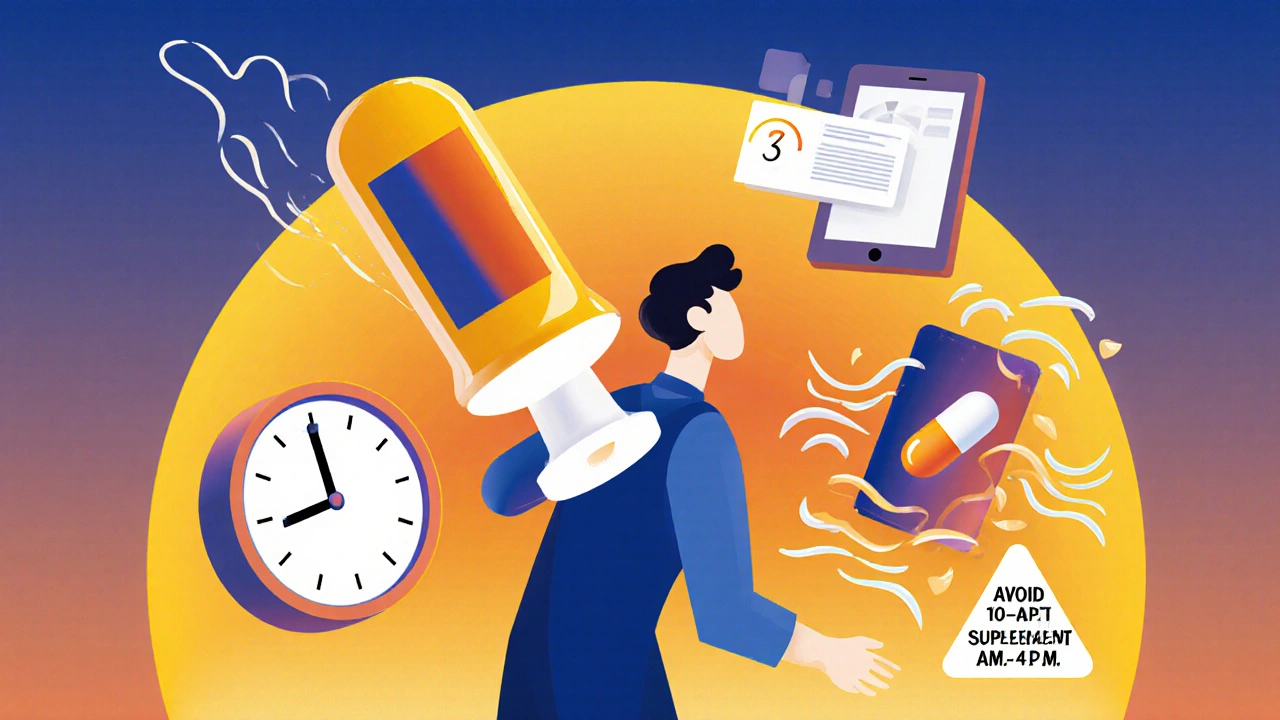
What If You Already Got a Reaction?
If your skin turns red, swells, or blisters after being in the sun:- Get out of the sun immediately
- Cool the area with a damp cloth - no ice
- Use aloe vera or hydrocortisone cream (1%) to reduce inflammation
- Take ibuprofen for pain and swelling
- Don’t pop blisters - they protect the skin underneath
- Contact your doctor. You may need to switch antibiotics
Why Most People Fail at Prevention
The science is clear. The steps are simple. But only about 39% of patients actually follow them. Why?- They don’t know they’re at risk
- They think sunscreen is enough
- They don’t reapply
- They wear regular clothes and assume they’re protected
- They take the pill in the morning because that’s when they remember
What’s New in Prevention?
In 2023, the FDA approved a new oral supplement - a mix of β-carotene and soybean trypsin inhibitor - to help block phototoxic damage. In a trial of 318 people, it reduced reactions by 63%. It’s not a replacement for sunscreen or clothing, but it’s a helpful extra layer, especially for long-term users. Also, new antibiotics like gepotidacin are being developed with no phototoxic risk. As these become available, the problem will fade. But for now, 22% of outpatient antibiotics still carry this risk.Final Checklist: Your Phototoxicity Prevention Plan
Before you start your antibiotic, run through this:- ✅ Confirm if your antibiotic is high-risk (doxycycline, ciprofloxacin, etc.)
- ✅ Ask your doctor: “Is there a safer alternative?”
- ✅ Buy SPF 50+ broad-spectrum sunscreen (and a bottle you’ll actually use)
- ✅ Get UPF 40+ clothing and a wide-brimmed hat
- ✅ Switch your antibiotic dose to evening if possible
- ✅ Download a UV index app and set daily reminders
- ✅ Avoid sun between 10 a.m. and 4 p.m.
- ✅ Reapply sunscreen every hour if outside
Can I still go outside if I’m taking doxycycline?
Yes, but you need to be extra careful. Doxycycline is one of the most phototoxic antibiotics. You can go outside, but avoid direct sun between 10 a.m. and 4 p.m., wear UPF 40+ clothing and a wide-brimmed hat, apply SPF 50+ sunscreen every hour, and take your dose at night. With these steps, you can safely enjoy outdoor time.
Is SPF 30 enough for antibiotics?
No. SPF 30 only blocks about 55% of the UVA rays that cause phototoxic reactions. SPF 50+ blocks 92%. Studies show people on antibiotics need the higher protection because their skin reacts more severely. Don’t rely on SPF 30 - it’s not sufficient.
Does sunscreen wear off faster when taking antibiotics?
Yes. Antibiotics can make your skin more reactive, and the UV exposure can break down sunscreen faster. A 2022 study found regular sunscreens degrade 65% faster under antibiotic-induced photosensitivity. Reapply every hour - even if the label says “80 minutes water resistant.”
Can I use tanning beds while on antibiotics?
Never. Tanning beds emit concentrated UVA light - the exact type that triggers phototoxicity. Even one session can cause severe burns, blistering, and long-term skin damage. Avoid tanning beds completely while taking any antibiotic known to cause photosensitivity.
Will phototoxicity go away after I stop the antibiotic?
Most reactions fade within days to weeks after stopping the drug. But dark spots (hyperpigmentation) can last months. In rare cases, repeated reactions may increase long-term skin cancer risk. Protect your skin even after finishing the course - especially if you had a bad reaction.
Are there any natural ways to prevent phototoxicity?
There’s no proven natural prevention. Antioxidants like vitamin C or E don’t reliably block phototoxic reactions. The only proven methods are physical protection: sunscreen, clothing, shade, and timing your dose. A new FDA-approved supplement with β-carotene and soybean trypsin inhibitor helps, but it’s not a substitute for sun safety - it’s an extra layer.
Should I stop my antibiotic if I get a sunburn?
Don’t stop on your own. Call your doctor. Sometimes, switching to a non-phototoxic antibiotic (like moxifloxacin instead of ciprofloxacin) is the best solution. Stopping early can let your infection come back stronger. Your doctor can help you balance safety and treatment.

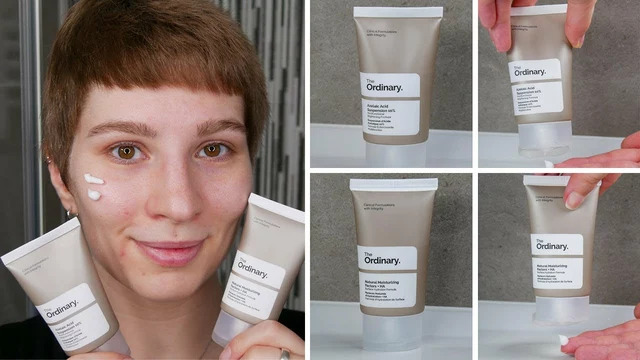



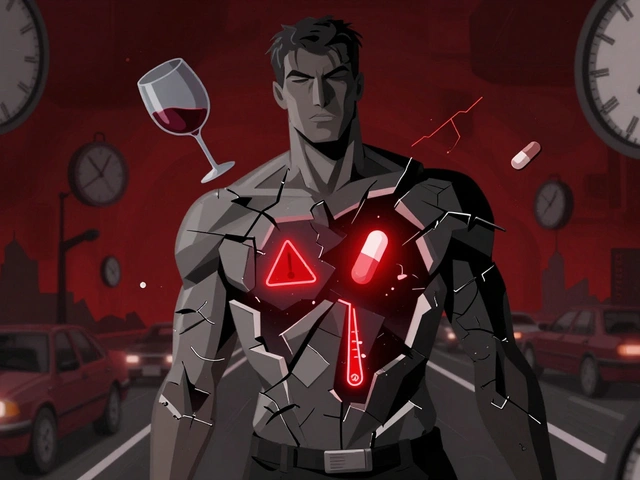
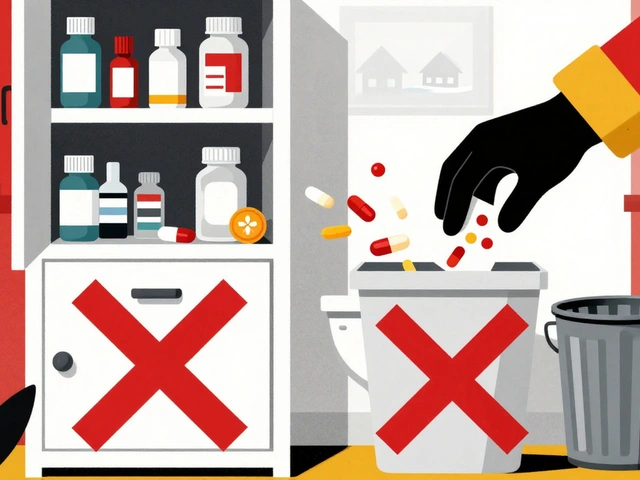
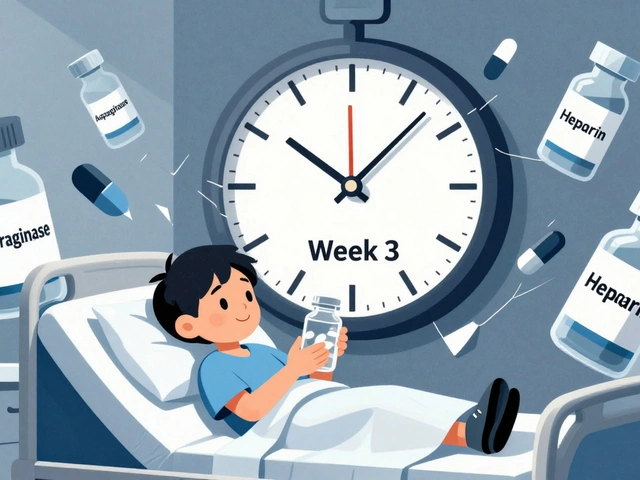

10 Comments
Just finished my 14-day doxycycline course and didn’t get burned once. SPF 50+, UPF shirt, and taking it at 8 PM like the article said. Seriously, it’s not that hard. People act like you’re asking them to give up oxygen.
Also, no tanning beds. Ever. Even if you’re ‘just going in for 5 minutes.’ You’re not special.
Okay, I’ll admit I thought this was overblown until I got blistered on a hike in Colorado while on cipro. Like, third-degree burns on my shoulders and neck from 20 minutes in the sun. I thought I was just ‘sun sensitive’ - turns out my antibiotic was doing the real damage.
Now I’m the guy at the park wearing a full sun hood, gloves, and reapplying sunscreen every 45 minutes like a paranoid robot. My friends laugh. I don’t care. I’d rather look ridiculous than spend three weeks in pain with peeling skin that looks like a burnt pizza.
Also, the part about sunscreen degrading 65% faster? That’s the real kicker. Most people don’t know that. Your ‘water-resistant’ SPF isn’t magic. It’s a lie waiting to happen.
And yeah, UPF clothing isn’t fashion-forward, but neither is spending your summer looking like a lobster. I bought a pack of long-sleeve UV shirts from Columbia. They’re cheap, breathable, and I wear them to the grocery store now. No shame.
Also - if your doctor says ‘just avoid the sun,’ they’re not helping. You need specifics. This post? This is the kind of info that saves people from years of hyperpigmentation. Thank you for writing this. Seriously.
lol sunscreen 50+? who even uses that? i just slather on coconut oil and call it a day. also tanning beds are fine if you dont stay long. and why are we acting like antibiotics are poison? my grandma took tetracycline in the 70s and danced at weddings in the sun. you people are too scared of everything now.
Bro, I’m a construction worker in Bangalore and was on doxycycline for a week. No shade, no AC, just heat and sun. Did the evening dose trick and wore a regular cotton cap - got roasted. Then I bought a $10 UPF hoodie from Amazon. Game changer.
Reapplying sunscreen every hour? Yeah, I did it. Even when I was sweating buckets. Didn’t get a single blister. My crew thought I was nuts. Now three of them are doing the same.
Also, don’t skip the sunglasses. UVA hits your eyes too. I used to think that was just for fashion. Nope. My eyes burned like I’d stared at the sun. Just sayin’.
There’s something deeply human about how we ignore our own biology until it bites us. We’ll take a pill that makes our skin vulnerable to the very thing that sustains life - sunlight - and then act surprised when it goes wrong.
It’s not just about sunscreen or clothing. It’s about respecting the chemistry inside us. We treat our bodies like machines that can be overclocked without consequences. But antibiotics aren’t just drugs - they’re molecular actors changing how we interact with the world.
And yet, we don’t pause. We don’t ask. We just swallow and go on. Maybe the real problem isn’t the drug. It’s the culture that treats medicine like a bullet with no recoil.
This article isn’t just a guide. It’s a quiet rebellion against the assumption that we’re invincible. And that’s worth more than a 50 SPF.
Also, the β-carotene supplement? Fascinating. Nature’s own sunscreen. Who knew?
I got phototoxicity on my nose last summer while on doxycycline. It looked like a raccoon had been fighting with my face. I cried in the mirror.
Now I wear a sun hat indoors when I’m near windows. My cat thinks I’m possessed. Worth it.
Also, the app tip? I use UV Lens. It’s dumbly simple. It pings me at 11 a.m. and 3 p.m. I don’t even think about it anymore. Just slap on sunscreen. Done.
Also, tanning beds? No. Just… no. I’m not risking my skin for a tan that fades in two weeks. I’m not that person anymore.
spf 50+?? bro its just sun. i took cipro and went to the beach. got red. big deal. i used aloe and called it a day. also why are we so scared of skin cancer? like, i’ve seen people die from eating too much sugar and no one talks about that. this is just fear marketing. also my cousin took doxy and went skydiving. no burn. so maybe its just me? 🤷♀️
Effective. Evidence-based. Necessary.
Thank you for the clear, actionable guidance. This is the standard all medical content should meet.
You’re not being dramatic if you wear a hat and reapply sunscreen. You’re being smart.
I’m a nurse and I’ve seen too many patients come in with phototoxic burns that look like they’ve been attacked by a blowtorch. It’s not glamorous. It’s not ‘just a sunburn.’ It’s a medical event.
And yes - taking your antibiotic at night? It’s not just a trick. It’s science. I tell every patient on doxycycline to do it. Half of them say, ‘I didn’t know I could.’
You’re not overreacting. You’re protecting your future skin. And that’s worth every extra minute.
Also - if you’re on antibiotics, you’re already fighting something. Don’t let the sun win too.
Why are we even talking about this? Just don’t take the antibiotic. Problem solved.